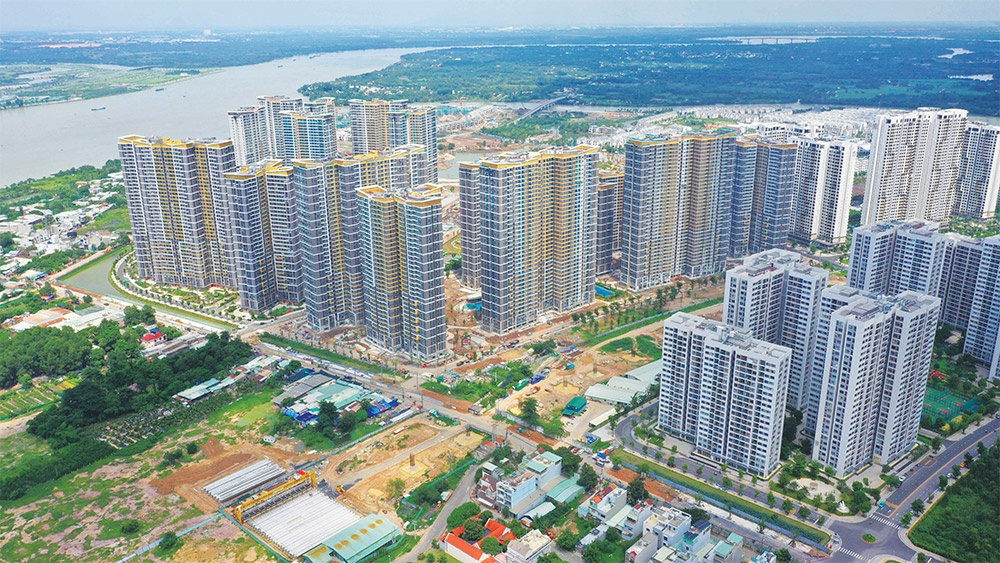There is an international airport system, a seaport system and convenient traffic connections by road and waterway with localities in the region, with the key economic zone in the South and neighbouring areas as well as internationally. Can Tho also has an abundant source of trained labour from the universities, colleges and vocational schools in the region.
Seeing the advantages, in recent years the city has been focused on “cleaning the nest, welcoming eagles” to develop industry. In October 2024, VSIP Can Tho Industrial Park (Vinh Thanh Industrial Park Phase 1) officially cleared the land synchronously with a total area of 293.7 hectares in less than 10 months.
This promises to become a new production centre of the Mekong Delta. It is expected that by the end of 2025, if the occupancy rate reaches 60%, VSIP will prepare procedures to apply for investment in VSIP Can Tho Industrial Park Phase 2, with a scale of 519 hectares.
At the end of 2024, the prime minister approved the investment policy for the project to invest in construction and business of infrastructure of Vinh Thanh Industrial Park (Phase 2). The project has an area of 540.58 hectares, with a total investment capital of 7.85 trillion according to the industry cluster model.
Investors are also interested in learning about the O Mon District High-Tech Industrial Park project, spanning about 250 hectares, and the Co Do-Thoi Lai Industrial Park, with an area of 1,070 hectares.
In October 2024, the irradiation plant in the Can Tho port area with a capacity of 19 trillion tonnes/year will officially come into operation, serving businesses exporting tra fish and shrimp to the US and European markets. Thermal power projects at the O Mon Power Centre are being vigorously implemented.
Industrial development in Can Tho has received a lot of attention from the government. Local authorities have also been decisive and resolute, issuing many policies to support attracting investment in industrial parks, creating favourable conditions for businesses to access land funds in industrial parks at reasonable costs and simplified administrative procedures.
However, Can Tho still faces many challenges. Currently, FDI attraction in Can Tho is quite modest. The economic restructuring is still slow with the proportion of economic sectors not changing significantly towards increasing added value. The development of transport infrastructure in recent times has not been commensurate and has not met the development requirements of the city.
The labour force is abundant, but the quality of labour has not met expectations. Many businesses face difficulties in recruiting highly skilled workers for specific industries, leading to increased costs for retraining human resources or having to hire experts from other regions.
The construction of industrial supply chains in Can Tho and connecting with neighbouring provinces faces many challenges due to the shortage of upstream supply sources and infrastructure limitations, reducing connectivity and the ability to develop a complete supply chain in the region.
To take advantage of the potential and opportunities for industrial development and create a solid foundation to enter the new era, Can Tho needs to focus on removing some bottlenecks.
Accordingly, it is necessary to focus on prioritising the development of a number of industries in the direction of meeting the principles of the city’s competitive advantages, with the ability to deeply participate in the global production network and value chain; synchronously invest and complete key projects with regional connectivity; create momentum for regional development; and lead and attract private capital to invest in the city’s strategic areas.
More attention should be paid to innovate and improve the quality of training facilities, focus on investing in developing technical facilities, improving the quality of management and teaching staff to create high-quality industrial resources.
Some experts believed that economic zones and industrial parks in the North and Central regions have successfully taken advantage of the trend towards resonance, support and mutual symbiosis in industrial development. This will also act as a worthy lesson for the Mekong Delta, especially Can Tho.








